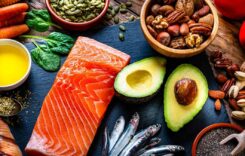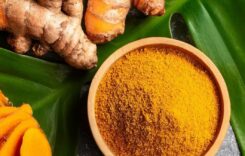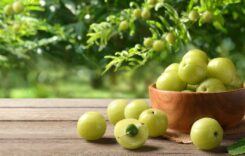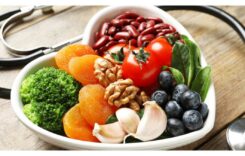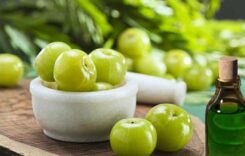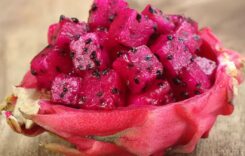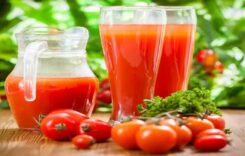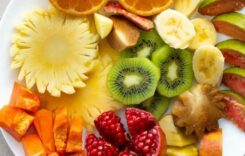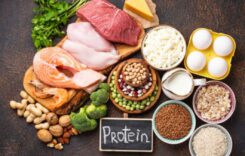According to the Centers for Disease Control and Prevention (CDC), type 2 diabetes accounts for up to 95% of the 10% of Americans who have the disease. This long-term illness that raises blood sugar levels has been related to major health problems like kidney and heart disease as well as vision loss. The favorable tidings? With the correct diet, type 2 diabetes can be controlled, if not prevented.
The greatest foods, according to experts, to maintain healthy blood sugar levels and manage diabetes are covered in this guide.
What Effect Does Nutrition Have on Diabetes?
According to Minisha Sood, M.D., a board-certified endocrinologist at Northwell Health’s Lenox Hill Hospital in New York City, nutrition plays a significant role in the development of type 2 diabetes. In fact, a 2023 study found that almost 70% of new cases of type 2 diabetes worldwide are caused by poor diets.
According to Dr. Sood, eating too many calories, especially from highly processed foods, can cause systemic inflammation and excess body fat, which can then result in insulin resistance, the first stage of diabetes. On the other hand, reducing refined carbs—such as those found in baked goods and beverages with added sugar—helps avoid insulin resistance.
Normally after a meal, the pancreas responds to elevated blood glucose levels by releasing the hormone insulin. Insulin facilitates the uptake of glucose from the blood into the cells of the liver, muscles, and fat, where it is either stored for later use or used as fuel. When the body’s cells don’t react to insulin as it should, it can cause insulin resistance and high blood glucose. Insulin resistance can strike people at a healthy weight, but it is also associated with risk factors such as obesity, inactivity, and a family history of type 2 diabetes.
Eating the right foods as part of a healthy lifestyle can help treat or even reverse type 2 diabetes, just as poor nutrition can cause the condition.
The Healthiest Foods for Diabetics
“Monitoring carbohydrate intake, choosing foods with a low glycemic index and incorporating a balanced mix of carbohydrates, proteins and healthy fats can help regulate blood sugar levels,” says Chrissy Arsenault, an enrolled dietitian nutritionist at Mentor Foundation in Landmark, Colorado.
Glycemic record (GI) alludes to how quick a starch containing food causes glucose to rise. Food varieties with a higher GI, similar to white bread or white rice and sugar, spike glucose levels more rapidly than low GI food sources, similar to oats, apples and vegetables. Low GI food sources are in many cases better choices for individuals with diabetes.
In any case, the GI of a food is just essential for the image, and it has its impediments. For instance, it doesn’t consider the effect different food varieties eaten simultaneously can have on glucose levels. Also, GI estimations are ordinarily founded on quite certain piece sizes. A few high GI food varieties are wealthy in supplements, and can be essential for a solid eating routine. Individuals with diabetes ought to intend to join a high GI food with a low GI one to bring down its effect on blood glucose. Carb-counting can likewise be a helpful device to keep away from undesirable glucose spikes.
Beneath, we list eight of the best food varieties for individuals with diabetes, authorities on the matter agree.
Green, Verdant Vegetables
“Leafy greens have a low glycemic index and are high in fiber, which helps regulate blood sugar levels,” says Arsenault. They likewise give fundamental nutrients and minerals like iron, magnesium, calcium and nutrients An and K and some B nutrients, adds Dr. Sood.
One more seasoned, 2011 investigation discovered that rising day to day utilization of green verdant vegetables by roughly one serving caused a 14% decrease in type 2 diabetes risk.
Take a stab at eating essentially a ½ cup of cooked mixed greens like spinach, kale, chard, collard or mustard greens day to day, exhorts Jean Copeland, a clinical dietitian nutritionist at Dartmouth Hitchcock Clinical Center’s Heart and Vascular Center in Lebanon, New Hampshire. She proposes scrambling them into eggs, adding them to a pan fried food or soup or planning them as a side dish.
Entire Grains
Entire grains, or crude grains, actually have their husk, making them, “chewier, heavier and more filling than refined grains,” says Copeland. They likewise contain more fiber, which makes blood glucose rise more leisurely than refined grains, she says.
One 2018 investigation discovered that consuming a solitary 16-gram serving of entire grains everyday (rye and entire grain bread, oats or muesli) was related with a diminished gamble of type 2 diabetes of 11% for men and 7% for ladies.
“Be wary of processed foods which claim to include whole grains,” desires Dr. Sood. All things considered, pick entire food sources like oats, earthy colored rice, rye and quinoa, she says.
Beans and Vegetables
Beans and vegetables like lentils and chickpeas are brilliant wellsprings of fiber and protein, which assist with settling glucose levels by dialing back the absorption of carbs and the arrival of glucose in the circulation system, says Arsenault.
Beans are additionally low-glycemic, so they don’t raise blood glucose as fast as different food sources containing starches, says Dr. Sood. As a matter of fact, as per a 2020 examination survey, standard vegetable utilization of between 50 to 190 grams each day is connected with improved glycemic control and decreased chance of cardiovascular sickness and mortality among people with type 2 diabetes.
Copeland proposes adding chickpeas or dark beans to a soup or salad or eating hummus with crunchy crude vegetables.
Nuts
Nuts, for example, almonds, pecans and pistachios have a low glycemic record and can assist with further developing insulin responsiveness, says Arsenault. A new exploration survey shows that eating nuts alone or joined with high GI food varieties decreased blood glucose levels in people with type 2 diabetes (when contrasted with utilization of high GI food varieties alone).
Nuts are additionally high in supplements, containing monounsaturated and polyunsaturated unsaturated fats, nutrients E and K and minerals like magnesium, copper, potassium and selenium, adds Dr. Sood. She suggests almonds, pistachios, pecans, cashews, walnuts, hazelnuts and Brazil nuts as great decisions for individuals with diabetes.
Greasy Fish
“Fatty fish (such as salmon, mackerel, sardines, anchovies, herring and trout) are rich in the omega-3 fatty acids docosahexaenoic acid (DHA) and eicosapentaenoic acid (EPA), which may have positive effects on diabetes and insulin resistance,” says Dr. Sood.
Omega-3s are additionally significant for heart wellbeing. Individuals with type 2 diabetes are bound to have hypertension and elevated cholesterol, putting them at more serious gamble of coronary illness and stroke.
Research shows that consuming greasy fish essentially a couple of times each week fundamentally decreases the gamble of death from coronary course illness and respiratory failure. This could be because of omega-3s and their capacity to diminish aggravation and further develop cholesterol.
Fish is additionally a superb wellspring of protein, a significant macronutrient for individuals with diabetes, says Dr. Sood. Research proposes individuals with type 2 diabetes ought to expect to get 20% to 30% of their everyday calories from protein.

